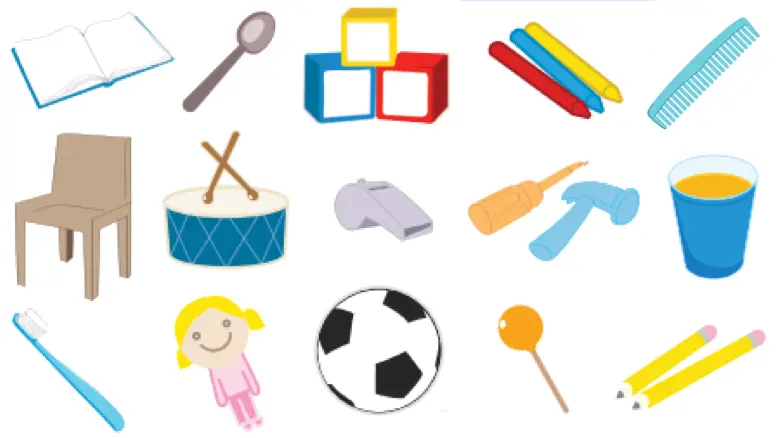Prevent Germs From Spreading
K-1 Lesson Plan: Fair Share or Don’t Dare?
While we often encourage students to share, there are some things that can make us sick if we share them. This sorting game helps students identify what’s “Fair Share” from what’s “Don’t Dare.”

Goals and Skills
STUDENTS WILL:
- Explain the risks of sharing certain items with others
- Explain what to do to protect themselves from shared germs
- Sort and classify information into categories
 SUPPLIES AND PREPARATION:
SUPPLIES AND PREPARATION:
- Red and green crayons, markers, or pens
- Make copies of the Fair Share or Don’t Dare handout or display on an overhead/projector (see page 3)
- If desired, some extra props for Steps 2 and 4, such as dolls, a spoon, or straw

Instruction Steps
EXPLAIN
What are germs? Explain to students what they are, where they live, and how small they are.
- Germs are tiny living things called bacteria or microorganisms that are all around us all the time
- Germs can live on things we touch, even though they are so tiny we can’t see them
DISCUSS
Talk to children about how germs spread. Demonstrate each point using props and by modeling.
Explain that sneezing and coughing can spread germs.
If they cover their mouths when they cough or sneeze, they won’t spread germs in the air. Germs can also move from person to person, so it’s important to always wash your hands before eating and after going to the bathroom.
It’s also important to never share things that touch their mouth, nose, or eyes.
FAIR SHARE OR DON’T DARE
Distribute the student handout on the last page of the PDF. (Or, project one copy and let everyone discuss together.) First, ask students to identify each object. Then, have them think about the items that touch their mouth, nose, or eyes.
Next, have students evaluate what items are “Fair Share”—or items that they can share without spreading germs. Ask students to put a green circle around those items.
Have students think about what not to share, or “Don’t Dare.” Ask students to mark a red X through those items.
Before discussing everyone’s choices, have students do a Think-Pair-Share. Have students talk with partners about what to share and what not to share and why.

DISCUSS AND REFLECT
As a final exercise, have students count the items they marked “Fair Share," then count the items they marked with an X.
Have them share their numbers. How many did others choose? Invite students to share what they marked. Discuss why each item is “Fair Share” or “Don’t Dare.”
EXTEND THE LESSON
Repeat the “Fair Share or Don’t Dare” activity with items in your classroom. Look around the class and sort items into “Fair Share” or “Don’t Dare.” Consider bringing in props such as gum, a straw, or a spoon.
HOME CONNECTION
Suggest students try this game at home with their parents and siblings using items around the house.
Download the Fair Share or Don’t Dare Lesson Plan
DISCLAIMER:
Healthy Habits® is Presented by Lysol® in collaboration with NEA and National PTA
SOURCES:
Education Standards: (NHES) Health: 1.2.1, 5.2.1, 7.2.2; (CCSS) English Language Arts: L.K.5; (CCSS) Mathematics: K.MD.b.3
For more resources, visit CDC – Be A Germ Stopper Poster https://www.cdc.gov/handwashing/pdf/294906-handwashing-superhero-boy-p.pdf
https://www.cdc.gov/handwashing/pdf/294906-handwashing-superhero-girl-p.pdf
CDC – Healthy Schools Parent Engagement Materials https://www.cdc.gov/healthyschools/parentsforhealthyschools/p4hs.htm
CDC - BAM! Body and Mind https://www.cdc.gov/healthyschools/bam/teachers.htm





